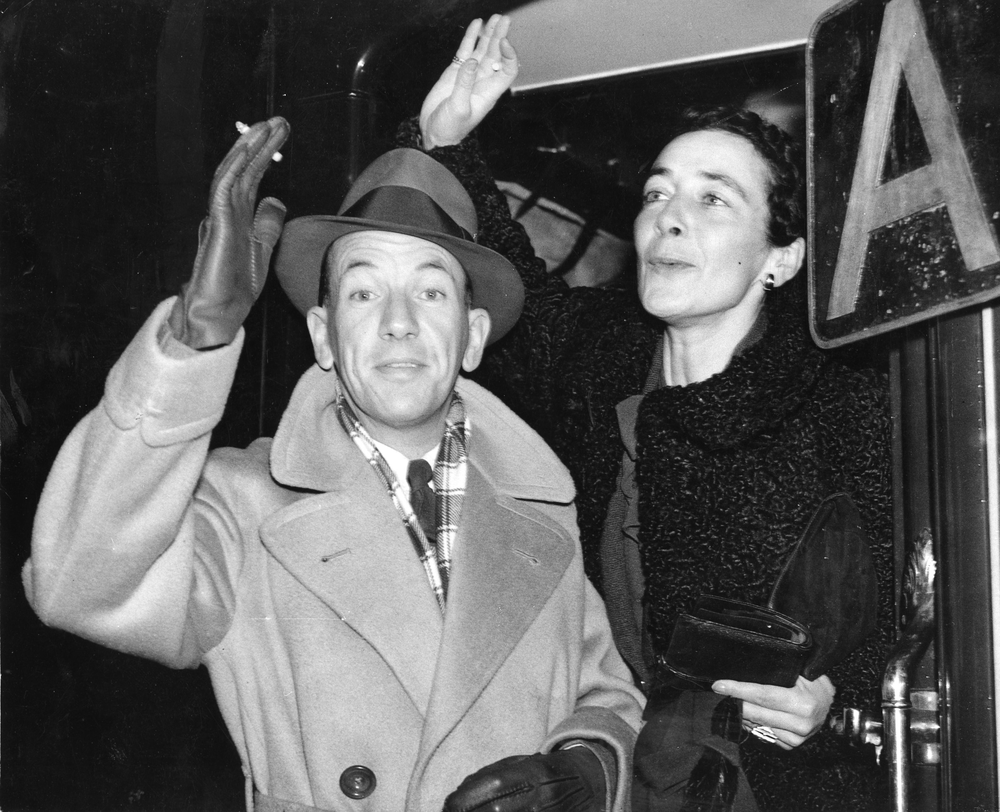“Noël Coward was like 15 different people,” explains Brad Rosenstein, curator of the exhibition Noël Coward: Art & Style which has just opened at London’s Guildhall Art Gallery. And all 15 were outstanding, that would be the obvious conclusion. Composer, actor, director, producer, playwright, painter, singer, self-taught polyglot, spy in the service of His Majesty… An institution in the West End, on Broadway and in Hollywood that was knighted and received an Honorary Oscar. New adaptations of his texts continue to premiere in theaters and cinemas around the world (the latest film adaptation of A mocking spirit just a few months old). “What we want to achieve with the exhibition is to restore in the memory of the public his multifaceted talent, because for many today he is only the creator of witty comedies and catchy songs, but Noël Coward (Middlesex, London, 1899) was a personality of many layers and an artist with infinite gifts ”, continues Rosenstein.
At the age of 11, he dropped out of school and made his acting debut in the West End. At 14 she began her relationship with the painter Philip Streatfeild. This introduced him to British high society of long weekends in country houses with maids and butlers, a social class that he would portray in his works. “I am determined to travel through life in first class,” he wrote. At 18 he got rid of participating in the First World War due to health problems and at 21 he began to chain plays in London (comedies such as I’ll leave It to you, musicals like London calling! or dramas of psychological intensity like Cavalcade, covering 30 years of British history) written, produced, directed and often starred by him, infused with brilliant song and dialogue. They became instant viral a hundred years before virality existed.
As an actor, he had prominent roles in Hollywood alongside stars such as Elizabeth Taylor, Yul Brynner and Michael Caine. “Everything I did was successful and everything happened at the same time,” explains Rosenstein. “From the 1920s to the early 1940s, everything bearing the Coward stamp became a phenomenon: there is no comparable personality in the history of British theater, both in the length of its grace and in its excellence in so many different fields ”.
And then the war came
What happened to stop the public from worshiping The Master, What did the press of his time call him? The Second World War. While the British people suffered the rigors of war, Coward traveled from New York to Paris via the Côte d’Azur and Australia without giving up his glamorous lifestyle. “The reality is that he was never proud of his role in the First World War and he always wanted to do more for his country,” says his biographer. “In the late thirties he was an international celebrity with very good connections, which is why in World War II he worked actively as a British secret agent trained to the highest standards of MI5 and MI6.”
Among his missions, a trip to Scandinavia, Russia and Poland in 1939 after which he warned his superiors of the risk of an imminent Nazi occupation. His report was ignored. “He continued to work for the Propaganda Ministry in Paris until shortly before France was invaded, and when Britain became the target of German bombing, Coward was among the first to point out the need for the United States to intervene,” continues Rosenstein. .
Under his cover in New York as president of the Actors’ Orphanage orphanage (“Philanthropy is another unknown facet of Coward’s biography: he transferred some 50 children from bombed England to a luxury mansion in New York”, adds Rosenstein ), continued to establish alliances to help his country. “He organized several meetings of senior English officials with Franklin Delano Roosevelt, and indeed many historians believe that the meetings sponsored by Coward, as well as the warm and trusting relationship he established with the President and his wife Eleanor had a decisive influence on the America’s entry into the war, ”Rosenstein tells of Coward, who also spied for MI6 in Hollywood and Broadway on celebrities suspected of sympathizing with the Nazis.
By their very nature, such activities were top secret, continues the commissioner, “and Coward began to receive fierce criticism from the British press, who wondered why he lived and traveled so luxuriously while his compatriots were forced to all kinds of sacrifices. Such animosity towards him was created that the scandal was debated in the House of Commons. All the top officials in the British government knew what was really going on. Coward asked them to defend him, but no one did. “
He did not make up for this unjust fame until 1969, when he was finally made a Knight. Almost everything indicates that Winston Churchill (who disapproved of Coward’s recognized homosexuality) was responsible for his not receiving recognition at the time, but “it is fair to say that he also had great pressure precisely because of all the negative press about Noël. The veto of the Prime Minister is not so clear, in fact, both maintained a very cordial relationship and it was Churchill who convinced Coward to go from watercolor to tempera in his paintings. They were friends? “That’s a tough question,” laughs Rosenstein. “It is something very British to have a seemingly friendly relationship that hides a lot of jealousy. I think that’s what happened with a lot of people that Coward considered friends. “
An extravagant elegance
However, there were a number of Coward’s loyal friends, especially friends. One of the “deep layers” that Rosenstein discovered in researching Coward’s life and work was his constant support of women. “At that time, the backstage It was completely dominated by men and it was not usual for anyone to disclose the names of their collaborators, much less if they were women, but Coward always recognized the merit of Doris Clare Zinkeisen and Gladys Calthrop, in charge of the scenes and costumes of the Coward’s works for decades ”.
As a sign of her support for female talent, Rosenstein says that Calthrop did not even have a stage training, since she was a painter, but Noël Coward detected her gifts and proved to be right. “Calthrop turned out to be a genius and today he remains a huge influence for his ability to create settings for any genre with exquisite sensitivity.”
Several pieces in the Guildhall Art Gallery exhibition recall Coward’s influence on fashion (the entire Anna Sui Fall / Winter 2017 collection was a nod to A mocking spirit), in the cinema, in the theater, in decoration and in everything that rhymes with luxury and good taste. Coward represented a very British kind of elegance and not at all bland, almost exotic. Perhaps because he lived through the twenties with intensity, which were the last flash of extravagance in men’s tailoring before entering its most classic stage in the thirties. From their double-breasted suits to their accessories (ties, pins), everything had a theatrical, eccentric touch.
“The suites of some of the best hotels in the world bear his name, such is their stylistic impact even now”, explains the curator of the exhibition. “The audience was very attracted to seeing how their characters dressed and what the sets of their works were like: it was part of the magic of going to a Coward premiere, and we wanted to recapture those feelings.”
They achieve this through original costumes (costumes that the writer often rescued for his usual wardrobe), sketches, decorations, paintings and even a 3D projector of some recordings recovered in the garage of his house in Switzerland, one of the houses that He decorated himself with the help of interior designer Syrie Maugham, such as his 17th-century farm in Kent or his last residence in Jamaica, where he died in 1973 at the age of 73.
“The colors and freedom of the Tropic became new colors and freedom for his latest works. In Jamaica he had an existence as fascinating as the one he led in New York and Hollywood: life, work and play were all one for him, ”recalls Rosenstein. Sir Noël Coward, who said that “work is much more fun than fun”, would surely agree with him.
You can follow ICON on Facebook, Twitter, Instagram, or subscribe here to the Newsletter.
–

